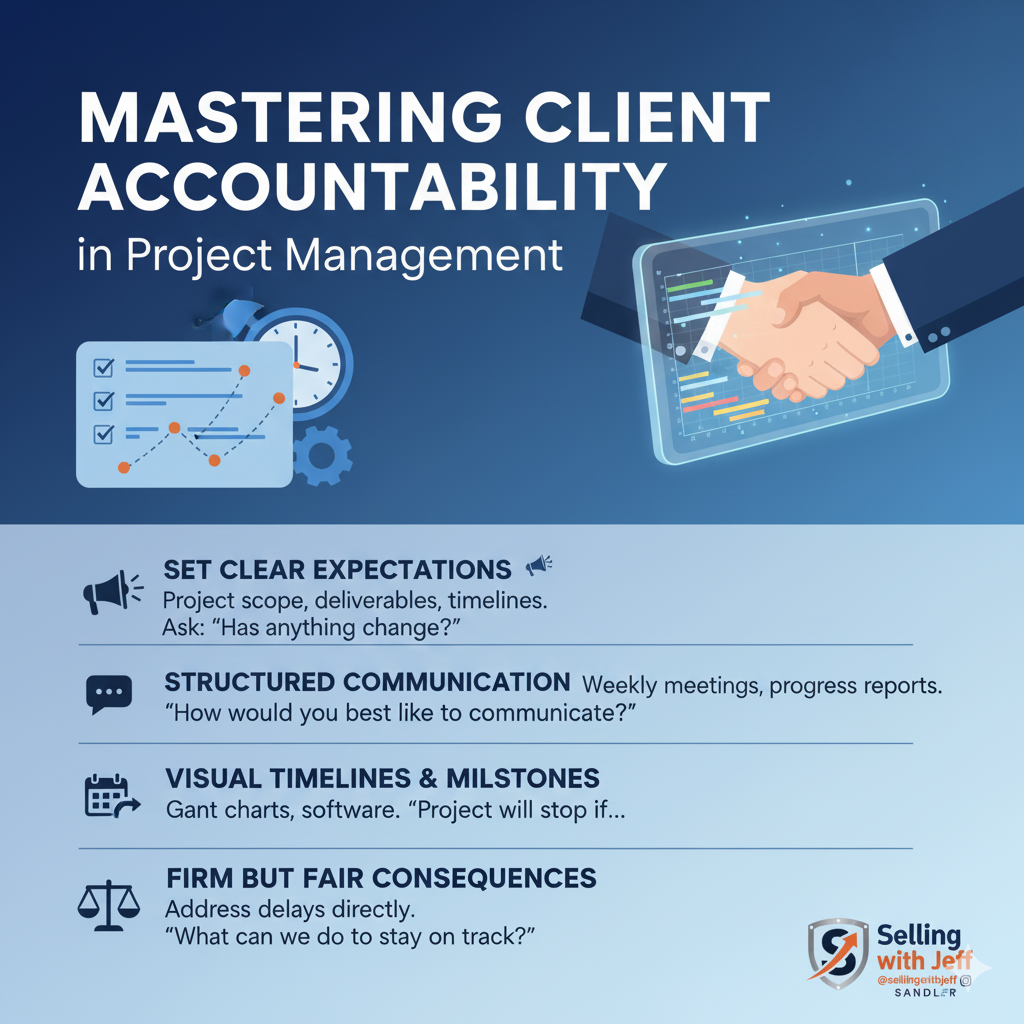Mastering Client Accountability in Project Management

Explore effective strategies to keep clients accountable and engaged throughout the project lifecycle, ensuring timely delivery and client satisfaction.
Setting Clear Expectations from the Start
From the outset of any project, it is crucial to set clear expectations with your clients. This foundation helps ensure that everyone is on the same page and understands their roles and responsibilities. Begin by outlining the project's scope, deliverables, and timelines in a detailed project plan. This plan should be shared and agreed upon by all stakeholders.
A powerful technique is to ask clients, "Has anything changed since the last time we met?" This question keeps the lines of communication open and helps identify any shifts in priorities or constraints early on. Additionally, be transparent about the project's demands and the client's role in meeting deadlines. By establishing these upfront agreements, you build a strong foundation for accountability.
Implementing Structured Communication Channels
Effective communication is the backbone of successful project management. Implementing structured communication channels ensures that everyone stays informed and engaged. Regular updates, whether through weekly meetings, progress reports, or dedicated communication platforms, keep all parties aligned and aware of the project's status.
It’s essential to adapt your communication style to fit the client's preferences. Some may prefer emails, while others might respond better to phone calls or text messages. Asking, "How would you best like to communicate?" can significantly improve responsiveness and engagement. Clear and consistent communication helps preempt issues and fosters a collaborative environment.
Utilizing Visual Timelines and Milestones
Visual timelines and milestones are excellent tools for maintaining client accountability. They provide a clear representation of the project's progress and highlight important deadlines. Utilize Gantt charts or project management software to create these visual aids, which can be shared with clients during meetings.
When presenting the timeline, emphasize the importance of adhering to the schedule. Explain how delays in decision-making or approvals can impact the overall project. For instance, if a client is slow to make a decision, communicate the consequences: "Project will stop if I don't hear back from you by [specific date]." This approach underscores the urgency and keeps clients focused on meeting their commitments.
Handling Delays with Firm but Fair Consequences
Despite best efforts, delays can happen. Handling them with firm but fair consequences is key to maintaining accountability without damaging the client relationship. When a delay occurs, address it directly and professionally. Explain the impact on the project timeline and outline the necessary steps to get back on track.
A technique that can be effective is the "firm and fair" approach, similar to parenting. Be clear about the consequences of missing deadlines but offer solutions to help clients meet their goals. For example, you might say, "I get the impression that the urgency to hit that deadline has changed. What can we do to ensure we stay on track?" This method emphasizes the importance of meeting deadlines while showing a willingness to support the client.
By setting clear expectations, implementing structured communication channels, utilizing visual timelines, and handling delays with firm but fair consequences, you can master client accountability in project management. These strategies not only ensure timely project delivery but also enhance client satisfaction and trust.

